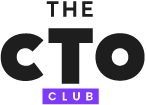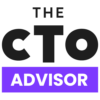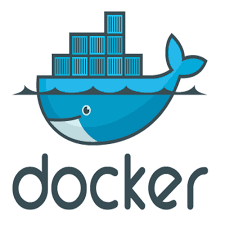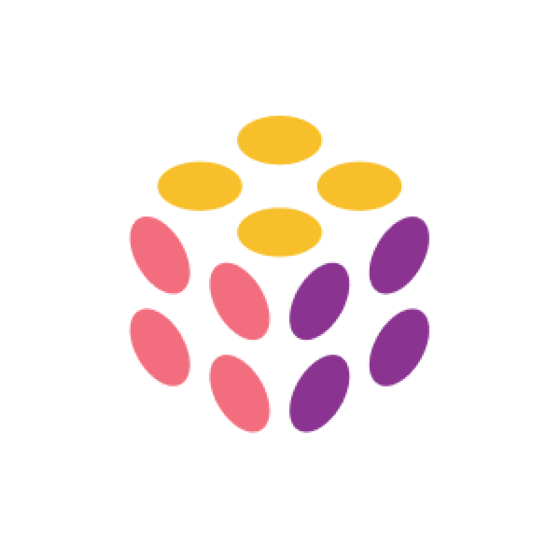Best ALM Software Shortlist
Here's my pick of the 10 best software from the 21 tools reviewed.
Our one-on-one guidance will help you find the perfect fit.
There are so many different ALM tools that making a shortlist of the best can be tricky. You want to allow your development teams to maintain visibility, traceability, and control over every phase of the application lifecycle but need the right tool for it. I've got you covered! In this post, I leverage my personal experience managing dozens of product developments and using many different platforms with larger teams to share my picks of the best ALM software.
Why Trust Our ALM Software Reviews
We’ve been testing and reviewing software development tools since 2021. As developers, we know how critical and difficult it is to make the right decision when selecting software.
We invest in deep research to help our audience make better software purchasing decisions. We’ve tested over 2,000 tools for different use cases and written over 1,000 comprehensive software reviews. Learn how we stay transparent & our review methodology.
The Best ALM Software Solutions Comparison Chart
Here is a table you can use to compare all the tools we just covered in the overviews.
| Tool | Best For | Trial Info | Price | ||
|---|---|---|---|---|---|
| 1 | Best ALM software for requirements management | 30-day free trial | Pricing Upon Request | Website | |
| 2 | Best ALM software for SAFe and/or LeSS frameworks | Free trial available | Pricing upon request | Website | |
| 3 | Best ALM software for safety-critical industries | Not available | Pricing upon request | Website | |
| 4 | Best ALM software for enterprises | Free for 5 users or less. | From $1/user/month | Website | |
| 5 | Best ALM software for risk- & CAPA-management | Not available | From about $69/user/month | Website | |
| 6 | Best ALM software for small teams & startups | Free demo available | From $14.78/user/month | Website | |
| 7 | Best ALM software for a robust integrations ecosystem | Free demo available | From $29/month/user | Website | |
| 8 | Best ALM software for easy setup and implementation | Not available | From approx. $150/month | Website | |
| 9 | Best ALM software for flexibility & scalability | 7-day free trial + free plan available | From $7.16/user/month (billed annually, min 5 seats) | Website | |
| 10 | Best all-in-one open ALM platform | Not available | Pricing Upon Request | Website |
-

Docker
Visit WebsiteThis is an aggregated rating for this tool including ratings from Crozdesk users and ratings from other sites.4.6 -

Pulumi
Visit WebsiteThis is an aggregated rating for this tool including ratings from Crozdesk users and ratings from other sites.4.8 -

GitHub Actions
Visit Website
Overviews Of The 10 Best ALM Software Solutions
Here’s a brief description of each ALM system to showcase each tool’s best use case, some noteworthy features, and screenshots to give a snapshot of the user interface. ALM software manages the full software development lifecycle, from initial planning and requirements through development, testing, deployment, and maintenance. It centralizes collaboration, provides clear project visibility, automates workflows, ensures traceability, and supports compliance, helping teams deliver high-quality software efficiently while aligning stakeholders around a unified strategy and shared goals.
Jama Software is an award-winning requirements management software that can tailor to any application lifecycle management strategy. They offer industry-specific solutions for medical devices, automotive and semiconductors, aerospace and defense, software development, and industrial manufacturing.
Some key features of Jama Software include end-to-end live traceability of people, data, and processes, along with real-time impact analysis, reviews, and approvals with team collaboration. Additionally, they offer the ability to accurately capture and communicate requirements, goals, progress, and interdependencies throughout the development process.
You can integrate Jama Connect requirements and test plans with ALM, PLM, QA, and MBSE. With API integrations and third-party integration hubs, teams can work in familiar tools while contributing to projects in Jama Connect.
Jama Connect licenses are available on a user and floating basis through an annual subscription model.
Pricing and trial information is available upon request.
Targetprocess is an Agile project management tool that uses SAFe, LeSS, or your own framework to assist in your application lifecycle systems and strategy. It is currently used by Chevron, Belfius, ePay, and Callrail for their various product management initiatives.
Targetprocess boasts an intuitive and easy-to-use user interface that encompases workflow configuration, task management, requirements management, and web-based administration (field-level mapping, automated conflict resolution). You can set up reporting dashboards at the portfolio, program, or product level.
Targetprocess comes with 60+ pre-built integrations and offers plugins, mashups, webhooks, REST API and SDK to sync with your existing SLDC tools. It’s available as a SaaS and as an on-premise solution.
Targetprocess costs from $20/user/month. They also offer a free Team version with unlimited users.
codebeamer is an integrated ALM platform created by Inland Software that specializes in advanced software or product development in safety-critical industries like medical, automotive, and aviation.
codebeamer’s core capabilities include ALM, requirements management, software development, QA and test management, IT operations and DevOps, demand management, risk management, and variants management.
codebeamer integrates with Jira, Microsoft Word, Excel, IBM Rational DOORS, and plenty more.
codebeamer is available as an on-premise or cloud-hosted SaaS starting at $125/user/month. A free 30-day trial is available.
In 2018, Microsoft rebranded their Visual Studio Team Service (VSTS) as Azure DevOps. Whether you consider this an ALM tool depends on how you define ALM, but Azure DevOps does work much like an ALM solution. It provides a standardized environment for managing a software application through its complete lifecycle with a unified DevOps approach.
You can further expand Microsoft Azure DevOps’ capabilities by connecting it to their first-party Microsoft Power Platform. This opens up the ability to build data-driven business solutions with Power BI, Power Apps, Power Automate, and Power Virtual.
As part of the Microsoft ecosystem, Azure DevOps offers dozens of pre-built integrations and a readily accessible library of extensions.
Azure costs from $1/user/month. It’s free for 5 users or less.
Best ALM software for risk- & CAPA-management
Orcanos Application Lifecycle Management is a secure, robust, and simple platform used for ALM by companies like GE, Medtronic, ReWAlk, and Zimmer. They offer ALM systems as well as tools for research and development (like requirements management and testing).
Orcancos’ ALM system provides a single data repository for R&D quality and regulations, end-to-end traceability (project requirements, test cases, FMEA risk items, CAPA and customer complaints), document generation, and impact analysis.
Orcanos doesn’t go out of their way to promote available integrations. However, this is because they really are an “all-in-one” tool that–in many cases–won’t require supplementary software to get the job done.
Orcanos Application Lifecycle Management costs from about $69/user/month.
Tuleap is an all-in-one, open source ALM software that provides an open framework for various ALM configurations. And by “various configurations” we really mean anything. The tool is marketed as “designed to be re-designed” so that you can integrate any number of tools you are already using: project management, requirements management, code versioning, code review, CI, test management, documentation, collaboration, and tracking.
One of the best things about Tuleap (like many open source tools) is the robust community support that users can tap into—or even add to themselves. The team at Tuleap further enhances these resources with their own webinars, live training, tutorials, and Q&A sessions.
This is a great ALM tool for teams who use, and like using, a lot of different tools and simply want a central place to integrate them.
Tuleap integrates with Jira, Jenkins, and GitLab.Paid versions of Tuleap cost from €5/user/month (~ $5.71 USD/user/month).
TeamForge is a traditional ALM solution focused on bi-modal development that is especially suited for companies in the embedded and/or IoT space. Key features include collaboration, end-to-end traceability across disparate tools, version control, and monitoring, reporting, and analysis capabilities.
Digital.ai (previously CollabNet) owns a series of software for traditional ALM, version control, Agile management, and DevOps.
TeamForge is their ALM solution and it integrates completely with their other tools if you need them.Collabnet VersionOne comes with 80+ pre-built integrations with leading tools like Jira, CA Agile, ServiceNow, Microsoft TFS, HP, Salesforce, Perforce, GitHub, Jenkins (and the list goes on).
Collabnet VersionOne costs from $29/month/user.
Micro Focus (formerly HPE ALM) has product development and issue management suite that makes it a perfect ALM solution. They also have tools for customer support and helpdesk, contract management, asset management, business support, project management, CRM, and service management. Micro Focus is great for teams that deal with all sorts of customers and contacts across their product portfolio.
Their full coverage solution to development and customer service makes them ideal for large ongoing projects as well as fast ad hoc-solutions in all your departments.
Micro Focus can be integrated with third-party tools through its REST API, and it comes with out-of-the-box integrations with leading tools like TFS, Jira, Jenkins, Git, and Visual Studio.
Micro Focus ALM Software costs from approx. $150/month.
Atlassian is a household name in software development circles that is geared toward Agile development teams in anything from startups to corporate enterprises. They are perfect for Agile ALM workflows and processes.
The Atlassian software suite for ALM can include any number of Atlassian products, sold separately, that integrate with one another.
These include Jira (task and project management), Confluence (collaboration), HipChat (real-time messaging), Bitbucket and Stash (code management and software developing tools), and add-ons like Jira Service Desk (issue management and support).
These are available on-premise or as SaaS.Jira is well-known for integrating with a wide variety of tools, including ones for data analysis, bug tracking, project management, resource planning, and communications.
Their apps marketplace is home to thousands of apps that easily connect with Jira, from Slack, Zoom, GitHub, Zendesk, and many more.
Jira costs from $10/month for 1-10 users.
Visure is an open ALM tool designed to integrate with any existing ALM environment in order to best accommodate different teams and cultures across your organization.
Visure has a long list of capabilities, including requirements management, traceability management, change management, bug & issue tracking, collaboration management, version control, requirements report generation, standards & certification, test management, risk management, and quality management.
Visure’s API integrates with third party tools such as modeling tools, other RM tools, prototyping tools, bug-tracking tools, testing tools, project management tools, ALM tools, and PLM tools.
Visure’s pricing and trial information are available upon request. They also offer demos and product sheets.
Other ALM Software Options
I haven’t had time to fully review these, but if the featured software above doesn’t work for you. Here is an additional list of ALM tools to check out:
- Polarion
For built-in test and issue management
- VisionFlow
Combined project management & ALM
- SpiraTeam
Cloud-based ALM for software development lifecycles & defect tracking
- Kovair ALM Studio
ALM platform for automating task workflows
- IBM CLM
ALM platform for existing IBM users
- Enterprise Architect
ALM platform for fast, intuitive modeling and design
- Rommana ALM
For traceability of requirements
- Rocket Application Lifecycle Management
For built-in change management capabilities
- Rocket Aldon ALM Software
For ALM + change management working together
- Digite SwiftEnterprise
ALM platform for lean and Agile teams
- Perforce Helix ALM
For creating requirements and sharing requirements documents
Selection Criteria
When selecting the best ALM software to include in this list, I considered common buyer needs and pain points like ensuring traceability across the software development lifecycle and integrating seamlessly with existing toolchains. I also used the following framework to keep my evaluation structured and fair:
Core Functionality (25% of total score)
To be considered for inclusion in this list, each solution had to fulfill these common use cases:
- Requirements management
- Test case management
- Defect tracking
- Release management
- Traceability reporting
Additional Standout Features (25% of total score)
To help further narrow down the competition, I also looked for unique features, such as:
- Support for agile, waterfall, and hybrid methodologies
- Advanced reporting and analytics dashboards
- AI-assisted requirements or test suggestions
- Built-in compliance management tools
- Seamless integration with DevOps pipelines
Usability (10% of total score)
To get a sense of the usability of each system, I considered the following:
- Clean and intuitive user interface
- Logical navigation and workflow structure
- Minimal clicks to complete core tasks
- Clear labeling and in-app guidance
- Customizable dashboards and views
Onboarding (10% of total score)
To evaluate the onboarding experience for each platform, I considered the following:
- Availability of detailed onboarding guides or product tours
- Access to recorded training videos and documentation
- Interactive help through chatbots or tooltips
- Pre-built templates for common workflows
- On-demand webinars and user communities
Customer Support (10% of total score)
To assess each software provider’s customer support services, I considered the following:
- Live chat or phone support availability
- Responsiveness of email or ticketing system
- Access to knowledge base and FAQs
- Community forum activity and moderation
- Availability of dedicated customer success manager
Value For Money (10% of total score)
To evaluate the value for money of each platform, I considered the following:
- Transparent and tiered pricing structure
- Feature-to-price ratio compared to competitors
- Inclusion of critical features in base tiers
- Discounts for volume or long-term commitments
- Availability of free trials or freemium options
Customer Reviews (10% of total score)
To get a sense of overall customer satisfaction, I considered the following when reading customer reviews:
- Overall satisfaction rating
- Commonly mentioned pros and cons
- Feedback on stability and performance
- Support experience and resolution time
- Review volume and recency across platforms
How to Choose ALM Software
It’s easy to get bogged down in long feature lists and complex pricing structures. To help you stay focused as you work through your unique software selection process, here’s a checklist of factors to keep in mind:
| Factor | What to Consider |
|---|---|
| Scalability | Will this tool still work if your team doubles in size or adds new product lines? |
| Integrations | Does it connect easily with your existing tools like Git, Jira, Jenkins, or Slack? |
| Customizability | Can you tweak workflows, fields, and dashboards without custom code or consultants? |
| Ease of use | Will your devs actually want to use it? Look for clutter-free UIs and fast task flows. |
| Implementation and onboarding | How long will setup take? Are there templates, sandbox modes, or guided walkthroughs? |
| Cost | How do pricing tiers align with your team’s needs? Watch for seat-based pricing or feature gates. |
| Security safeguards | Does it offer SSO, audit logs, and data encryption that match your org’s standards? |
| Internal resourcing needs | Do you need someone to own this tool, or can it run smoothly with minimal oversight? |
What is ALM Software?
Application lifecycle management (ALM) software manages the full software development lifecycle, from initial planning and requirements through development, testing, deployment, and maintenance.
It centralizes collaboration, provides clear project visibility, automates workflows, ensures traceability, and supports compliance, helping teams deliver high-quality software efficiently while aligning stakeholders around a unified strategy and shared goals.
Features of ALM Software
When selecting ALM software, keep an eye out for the following key features:
- Requirements management: Tracks and organizes user stories, features, and system requirements throughout the project.
- Test case management: Helps teams create, manage, and execute test cases to validate software quality.
- Defect tracking: Logs and monitors bugs or issues so they can be fixed quickly and efficiently.
- Version control integration: Connects with tools like Git to manage code changes and maintain history.
- Release planning: Supports scheduling and coordination of software releases across teams.
- Traceability matrix: Links requirements to tests, defects, and code to ensure complete coverage.
- Collaboration tools: Enables communication and document sharing across team members and departments.
- Custom workflows: Allows teams to adapt the tool to fit their specific processes and approval steps.
- Access control: Manages user roles and permissions to protect sensitive information.
- Reporting and dashboards: Provides visual insights into progress, status, and performance metrics.
Benefits of ALM Software
Implementing ALM software provides several benefits for your team and your business. Here are a few you can look forward to:
- Better team alignment: Shared workflows and traceability features help everyone stay on the same page.
- Fewer missed requirements: Requirements tracking and test linking make it easier to catch gaps early.
- Faster issue resolution: Built-in defect tracking helps teams spot and fix bugs without delays.
- Clearer release visibility: Release planning tools give teams a better view of what’s shipping and when.
- Easier audits and compliance: Traceability and reporting features make it simpler to meet process requirements.
- More predictable outcomes: Having all lifecycle data in one place helps reduce surprises during development.
- Less time wasted: Centralized tools and integrations cut down on switching between platforms.
Costs and Pricing of ALM Software
Selecting ALM software requires an understanding of the various pricing models and plans available. Costs vary based on features, team size, add-ons, and more. The table below summarizes common plans, their average prices, and typical features included in ALM software solutions:
Plan Comparison Table for ALM Software
| Plan Type | Average Price | Common Features |
|---|---|---|
| Free Plan | $0 | Basic task tracking, limited users, community support, and minimal storage. |
| Personal Plan | $5–$15/user/month | Requirements management, basic test case tracking, limited integrations, and dashboards. |
| Business Plan | $20–$40/user/month | Advanced reporting, custom workflows, third-party integrations, and role-based access. |
| Enterprise Plan | $50–$100/user/month | SSO support, audit logs, full traceability, compliance tools, and dedicated support. |
ALM Software FAQs
Here are some answers to common questions about ALM software:
How does ALM software support agile teams?
Most ALM tools let agile teams plan sprints, track user stories, and manage backlogs. You can also connect testing and bug tracking to your agile workflow. Some tools include burndown charts or velocity tracking. Look for flexible workflows if your team uses hybrid or customized agile processes.
Can ALM software integrate with DevOps tools?
Yes, many ALM tools integrate with DevOps tools like Jenkins, GitHub, GitLab, and Azure DevOps. These integrations help connect your codebase, CI/CD pipelines, and testing tools to your planning and tracking systems. That way, your team gets better visibility across development and operations.
What's the difference between ALM and PLM software?
ALM manages the software development lifecycle, while PLM (Product Lifecycle Management) focuses on the entire lifecycle of a physical product. If your team builds software-only products, ALM is the better fit. If your software supports hardware products, you might need both.
Do small teams need ALM software?
Small teams can still benefit from ALM tools, especially if they need better visibility or traceability. Many tools offer free or low-cost plans that cover basic needs. Just be careful not to overbuy—look for tools that scale as you grow without adding too much complexity up front.
How secure is cloud-based ALM software?
Most cloud-based ALM platforms offer encryption, access controls, and compliance with industry standards. Still, you should check for things like SSO, audit logs, and data residency options. If your company has strict IT policies, involve your security team in the buying process.
Can I migrate from one ALM tool to another?
Yes, but it’s not always quick or easy. Migration often involves moving data like requirements, test cases, and issues—sometimes manually or with custom scripts. Check if the new tool offers import tools or API access to make the transition smoother. You’ll also want time to train your team.
What's Next?
Choosing the best ALM software depends on your team’s size, workflow, and toolchain needs. Whether you’re managing complex product lifecycles or just need tighter traceability, there’s a solution out there that fits.
Want more practical tips like this? Subscribe to The CTO Club newsletter for curated insights, tools, and advice—sent straight to your inbox.
























